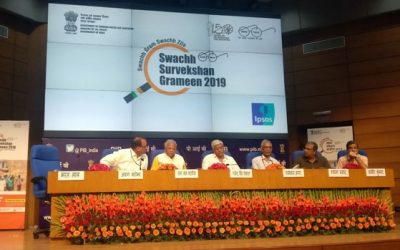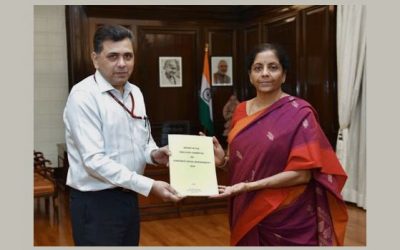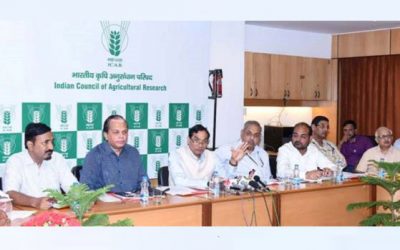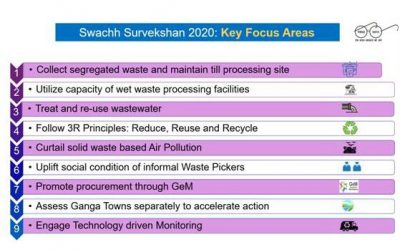 In the last two decades, social media platforms have gotten too big and powerful but have mostly shrugged responsibility. Moreover, the big ones are literally without competition in their respective markets. There is no close direct competitor to a Facebook, Twitter, YouTube, LinkedIn, et al.
In the last two decades, social media platforms have gotten too big and powerful but have mostly shrugged responsibility. Moreover, the big ones are literally without competition in their respective markets. There is no close direct competitor to a Facebook, Twitter, YouTube, LinkedIn, et al.
In this sense, social media platforms have become analogous to governments that are either free of any opposition or have a very weak opposition to contend with. Isn’t that what we call nonconductive to democracy?
Indeed. Be it Facebook, WhatsApp, or Google, they keep changing privacy policies. Sometimes these changes are to meet the regulatory requirements of the markets they operate in but often these changes are also at their wills (I chose not to use whims here) and fancies. Mostly, these changes are to suit their commercial interests, period.
Arm-twisting users to accept new privacy rules
Take the most recent and glaring instance of WhatsApp, for example. In early 2021, the Facebook-owned social messaging behemoth decided to issue a new privacy-policy diktat to its more than 500 million users in India to take it (the new privacy policy) or leave it (use of the WhatsApp app). After the government didn’t approve of its new privacy policy, WhatsApp did a climbdown from its earlier stand. It has postponed the exit of those users who have not accepted its policy for now.
WhatsApp argues against the government’s new guidelines (see article) on the pretext of servicing the ‘privacy interest’ of its users. At the same time, it tries forcing a privacy policy on users that they don’t approve of, by making a blatant misuse of its dominant position in the social messaging market segment. (It may be noted that Telegram is a distant second to WhatsApp globally as well as in India).
See also: Ironic that WhatsApp breaches privacy but wants govt to practice it.
 Sumant Parimal, Chief Analyst at 5Jewels Research and a keen IT industry observer agrees, “When they (social media companies) want, they impose any kind of term and conditions on users while even compromising privacy of users, but when Indian government asks for something then they are citing privacy as reason for not complying.”
Sumant Parimal, Chief Analyst at 5Jewels Research and a keen IT industry observer agrees, “When they (social media companies) want, they impose any kind of term and conditions on users while even compromising privacy of users, but when Indian government asks for something then they are citing privacy as reason for not complying.”
So, what recourse do users have against such misuse of power by these platforms? There is no social-media appellate who could step in to safeguard the democratic interests of netizens. They are left with no other choice but to approach real-world courts and governments, who sometimes do step in and intervene.
Has regulation become a need of the changed times?
There is a thin line between democracy and anarchy, just as there is a thin line between freedom of speech and indecency of speech.
Social media is a platform that espouses the tenets of democracy and freedom of speech but where these cherished values can easily be sucked by dungeons of anarchy and indecent speech.
Worse, social media–and more so the social messaging platforms—can be misused by criminals and terrorists for perpetuating their respective agendas. Tech media is often replete with news of various cybercrimes ranging from digital frauds and cyber stalking to ransomware attacks.
Is government-led regulation of social media platforms needed?
Let’s be fair—the average internet user faces a perennial dilemma whenever the topic crops up. Netizens tend to see government interventions as a double-edged sword, which can cut both ways. There have been numerous instances in the past when netizens have opposed steps taken by governments to regulate the internet.
There are obvious reasons for users to be distrustful of both the government and the internet companies when it comes to protecting their freedom of speech and expression, particularly on social media platforms.
While the average utopian users will quite likely be fine with an intervention that rids social media platforms of obscenity, violence, and disharmonies of all kinds, they may not like any intrusive policing and patrolling of their social walls and communities.
Alas, internet is no longer the global village it was conceived to be!
Nevertheless, with the right regulatory mechanisms in place, it can be made a lot better than what it is today.
Verified accounts are a good way to autoregulate
 Anshuman Tiwari, a well-known process transformation professional, podcaster, and YouTuber has summed it up aptly, “So there is this chaos around the banning of some social media services in India. While we can debate the interest and logic in doing this, there is a huge opportunity to sort this mess. All social media should be ‘verified.’ Verified accounts will behave better. And the trolls will be careful. Essentially, what you can’t say in real life and get away with should also be not said online.”
Anshuman Tiwari, a well-known process transformation professional, podcaster, and YouTuber has summed it up aptly, “So there is this chaos around the banning of some social media services in India. While we can debate the interest and logic in doing this, there is a huge opportunity to sort this mess. All social media should be ‘verified.’ Verified accounts will behave better. And the trolls will be careful. Essentially, what you can’t say in real life and get away with should also be not said online.”
A lot of people will lose a lot of ‘followers’ though, he quips.
A good thing is that amidst all the recent social-media din and commotion in the wake of the Intermediary Guidelines issued earlier by Ministry of Electronics and IT (MEITY), there has been some positive development on the front. Most significantly, Twitter has recently said it will enable a system for users to verify their Twitter accounts. It noted on its official website, “Starting May 20, 2021, we’ll begin rolling out verification applications to everyone. If you don’t see it in your Account Settings tab right away, don’t worry! Everyone should be able to apply soon.”
It is a well-known fact that getting an account ‘verified’ on Twitter has historically been one of the most arduous and hard-to-achieve tasks for a common Twitterati.
Multi-stakeholder regulation can infuse trust
When it comes to the wider impact of social media, there are multiple stakeholders at play. These include the general users, the government, the opposition, public figures, businesses, academia, judiciary, and the social media platforms themselves, among others.
So, a panel that comprises representations from several of these stakeholder groups should ideally be allowed to monitor, judge, and moderate the social media platforms. Such a measure would help alleviate the apprehensions that the new rules and regulations may be misused by a government in power.
It would also ensure that social media has not just power, but also shoulders the responsibility that is required of an internet intermediary in today’s context. With up to half of India’s eligible population (less than 13/14 years of age) likely to be on one social media platform or the other, there indeed is a need to ensure that these platforms are not used by elements that are detrimental to the society and the nation.
Indeed, when too much power, direct or indirect, gets concentrated in any institution or platform, it is important to put the right set of checks and balances in place.
By issuing the intermediary guidelines, the government has done well to put the necessary checks in place. What it needs to do now is to balance it all by constituting a multi-stakeholder mechanism (panel) to monitor any potential breach and recommend any corrective measures or punitive actions to the concerned government authorities.
This way, the panel itself works like an intermediary between the government and the social media companies as well as between the users and the government or the social media companies.







 The Swachh Survekshan 2020 Toolkit launched by the Minister contains the detailed survey methodology and component indicators with scores to help cities to prepare themselves for the survey.
The Swachh Survekshan 2020 Toolkit launched by the Minister contains the detailed survey methodology and component indicators with scores to help cities to prepare themselves for the survey.
 Move #2: The most significant manifestation of this drive is reflected in the recent decision of slashing of goods and services tax (GST) rates for electric vehicles and related services to 5%. While GST rate on all electric vehicles was reduced from 12% to 5%, the rate on charger or charging stations for electric vehicles be reduced from 18% to 5%. Also, hiring of electric buses of carrying capacity of more than 12 passengers by local authorities was exempted from GST.
Move #2: The most significant manifestation of this drive is reflected in the recent decision of slashing of goods and services tax (GST) rates for electric vehicles and related services to 5%. While GST rate on all electric vehicles was reduced from 12% to 5%, the rate on charger or charging stations for electric vehicles be reduced from 18% to 5%. Also, hiring of electric buses of carrying capacity of more than 12 passengers by local authorities was exempted from GST.
0 Comments